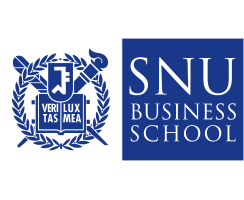Notice
[일반] 생산서비스운영 전공 세미나 안내
강연자: University of Notre Dame 선대원 교수
일시: 9월 4일 (월) 16:00 - 17:00
장소: 59-1동 401호
주제: Co-Developing Technology Products by Asymmetric Competitors
초록: Technology products often have vital components that are owned or patented by different firms, each of whom also seeks to compete in the end-user market. Consequently, firms engage in a hybrid of collaboration and competition, where one firm might provide a crucial capability or ingredient to another that sells a competing end-market product. For instance, LG sells smartphones and supplies organic light-emitting diode displays for Google’s smartphones. The ingredient buyer firm (i.e., firm A) may co-invest to improve the quality of a shared ingredient (made by firm B). But how do firms gain strategic benefits in such arrangements? What factors govern their investment level? Who benefits and who loses? This paper addresses these questions. We find that B’s own investment is motivated more by increased partnership profit than by higher profit in the end-user market because competition limits the gains from a better product. Indeed, when A has sufficient end-product superiority, B exits the end-user market and becomes more aggressive in improving the quality of the shared capability. A strategic reason for A to co-invest in the shared capability is the desire for a higher performance level than that chosen by B (on its own) which self-throttles its own investment because it cannot fully monetize the gains in a competitive market. In doing so, both A and B make higher-quality end-user products and earn higher profits. Still, B gains more because it can extract part of A’s gains through an higher ingredient unit price. Crucially, firm A co-invests even though the investment prolongs firm B’s ability to maintain an end-user market presence in direct competition with A. Finally, we demonstrate that B could limit its Stackelberg leadership power to further improve the joint investment in an asymmetric partner relationship which can yield a win-win outcome for both firms.


